Key Takeaways
1. Quantum Physics Works, But What Is Real?
Your house keys are a temporary alliance of a trillion trillion atoms, each forged in a dying star eons ago, each falling to Earth in its earliest days.
World of the quantum. Quantum physics, the science of the ultratiny like atoms and particles, is the most successful scientific theory ever, underpinning everything from transistors to stars. Yet, the rules governing this microscopic world seem wildly different from our everyday experience. Atoms can be in multiple places at once, defying logic.
The measurement problem. This strange behavior of tiny objects doesn't seem to apply to large objects like keys or cats. Why? Either there's a boundary where quantum physics stops working, or quantum physics applies to everything, but our experience contradicts it. The theory's math works, but it's unclear what it says about reality itself, especially regarding "measurement," which seems to make quantum objects suddenly pick a single state.
Schrödinger's cat paradox. Erwin Schrödinger highlighted this problem with his famous thought experiment: a cat in a box linked to a quantum event. If the quantum event is in a superposition (both happened and didn't happen), the cat, according to the math, should be too (both dead and alive) until observed. This starkly contrasts with our experience and reveals a deep hole in our understanding of reality.
2. The Copenhagen Interpretation: Shut Up and Calculate?
According to the Copenhagen interpretation, this question has a very simple answer: quantum physics tells us nothing whatsoever about the world.
Avoiding the question. Rather than describing a quantum world, the Copenhagen interpretation, championed by Niels Bohr and Werner Heisenberg, claims quantum physics is merely a tool to calculate probabilities of experimental outcomes. It asserts there is no objective quantum world independent of observation; properties only become real when measured.
Measurement creates reality. Proponents like Pascual Jordan argued that measurement compels quantum objects to assume definite properties. This view avoids grappling with what happens when no one is looking, dismissing such questions as meaningless or unscientific, like asking if a tree falling in an empty forest makes a sound.
A "tranquilizing philosophy." This approach, while allowing physicists to "shut up and calculate" and achieve immense predictive success, was deeply unsatisfying to many, including Albert Einstein, who called it a "tranquilizing philosophy" that provided a "soft pillow" but failed to describe what is real.
3. Einstein vs. Bohr: The Battle for Reality
“Mach rather neglects the fact that the world really exists, that our sense impressions are based on something objective,” Einstein replied.
Clash of titans. Albert Einstein, a founder of quantum physics, vehemently opposed the Copenhagen interpretation's rejection of an objective reality independent of observation. He debated Niels Bohr, the interpretation's leading proponent, for decades, arguing that physics should describe the world as it is, not just predict observations.
Einstein's locality concern. Einstein's primary issue wasn't randomness ("God does not play dice") but locality – the principle that events in one place cannot instantly influence events far away. He devised thought experiments, like the EPR paradox, arguing that quantum physics was either incomplete (objects have properties before measurement) or nonlocal (measurement here instantly affects a distant object).
Bohr's elusive defense. Bohr's responses were often seen as vague and difficult to understand, focusing on the idea that measurement devices must be described classically and that quantum properties are complementary (like wave/particle duality) but cannot be simultaneously real. Despite Einstein's clear arguments about locality, Bohr's followers often misunderstood or dismissed his concerns, believing Bohr had won the debates.
4. Early Dissidents: Bohm's Pilot Waves and Positivism's Grip
According to Born, von Neumann had proven that the Copenhagen interpretation was the only possible way of understanding quantum physics.
The impossibility proof. For decades, physicists believed John von Neumann, a brilliant mathematician, had proven that no alternative interpretation of quantum physics was possible, solidifying Copenhagen's dominance. This proof, though subtly flawed, silenced many critics.
Positivism's influence. The philosophical movement of logical positivism, inspired by Ernst Mach, reinforced Copenhagen's view. Positivists claimed that statements about unobservable things were meaningless, making questions about the quantum world before measurement unscientific. This philosophical stance provided a convenient justification for avoiding difficult questions.
Bohm's challenge. David Bohm, inspired by Einstein, defied von Neumann's supposed proof in 1952 by developing a complete, deterministic alternative: the pilot-wave interpretation. In this view, particles always have definite positions, guided by "pilot waves." This theory reproduced all quantum predictions without wave function collapse or observer-dependence, but it was largely ignored or dismissed by the physics community.
5. The War Changes Everything: Physics Shifts Focus
The era of Big Science had arrived—and it had no patience for puzzling over the meaning of quantum physics.
Exodus from Europe. The rise of Nazism forced many leading physicists, particularly Jewish scientists like Einstein, Born, and Fermi, to flee Europe, shifting the center of physics to the United States and the UK. This brain drain devastated German physics but fueled rapid growth elsewhere.
The Manhattan Project. World War II, especially the race to build the atomic bomb, dramatically reshaped physics. The Manhattan Project required massive funding and manpower, focusing physicists on practical, calculation-heavy problems like nuclear physics and solid-state physics, rather than abstract foundational questions.
Post-war pragmatism. After the war, military funding continued to pour into physics, prioritizing applied research. University physics departments grew rapidly, but teaching shifted away from philosophical debates towards efficient calculation techniques. The Copenhagen interpretation's "shut up and calculate" ethos fit this new pragmatic, less philosophical environment perfectly.
6. Exile and Obscurity: Bohm and Everett's Unheard Alternatives
“If we cannot disprove Bohm, then we must agree to ignore him.”
Bohm's persecution. David Bohm's political views (briefly associated with communism) led to his blacklisting and exile from the US. Despite developing a viable alternative interpretation, his work was met with hostility and dismissal, exemplified by Robert Oppenheimer's alleged comment about ignoring Bohm if his theory couldn't be disproven.
Everett's many worlds. Hugh Everett III, a brilliant Princeton student, developed another radical alternative: the many-worlds interpretation. By taking the quantum math (the Schrödinger equation) literally, he proposed that wave functions never collapse but split the universe into multiple branches with every quantum event. This avoided the measurement problem but seemed absurd.
Ignored by the establishment. Both Bohm's pilot-wave theory and Everett's many-worlds interpretation were largely ignored by the physics mainstream for decades. Bohm's exile hampered his ability to promote his ideas, while Everett left academia for a career in military operations research, showing little interest in fighting for his interpretation's acceptance.
7. Bell's Theorem: The Most Profound Discovery
“The von Neumann proof, if you actually come to grips with it, falls apart in your hands!” said Bell.
Challenging the proof. John Bell, a physicist at CERN, was troubled by the vagueness of Copenhagen and the dismissal of alternatives like Bohm's. He meticulously examined von Neumann's famous proof and found it fundamentally flawed, based on unwarranted assumptions.
Contextuality revealed. In dismantling the proof, Bell showed that quantum physics implies "contextuality": the outcome of a measurement depends on what other properties are measured simultaneously. This doesn't mean properties don't exist before measurement, but that they are sensitive to the experimental context.
The EPR paradox revisited. Bell then turned to the EPR paradox, simplifying it to analyze the correlations between entangled particles. He proved that any local theory of nature must satisfy a certain mathematical condition (Bell's inequality). Quantum physics, however, predicted that entangled particles would violate this inequality.
8. Nonlocality Confirmed: Experiments Challenge Local Reality
“Jesus Christ, this is a very important result.”
Putting Bell to the test. John Clauser, a young experimental physicist, stumbled upon Bell's obscure paper and immediately recognized its profound implications and the possibility of an experimental test. Despite discouragement and the stigma against foundational work, he set out to perform the experiment.
The CHSH experiment. Collaborating with Abner Shimony, Michael Horne, and Richard Holt, Clauser developed a concrete experimental proposal (the CHSH experiment) to test Bell's inequality using entangled photons. This turned a philosophical debate into a testable scientific question.
Quantum mechanics wins. Clauser and his student Stuart Freedman conducted the first successful test in 1972, followed by improved experiments by other teams, notably Alain Aspect's group in the early 1980s, which closed key loopholes. The results consistently violated Bell's inequality, confirming quantum mechanics' predictions and demonstrating that nature is nonlocal – a "spooky action at a distance" is real.
9. Philosophy Strikes Back: Realism vs. Positivism
“Realism,” he claimed, “is the only philosophy that doesn’t make the success of science a miracle.”
Positivism's decline. While physicists largely ignored foundational questions, philosophers of science underwent a revolution. Thinkers like W.V.O. Quine, Thomas Kuhn, and Hilary Putnam dismantled logical positivism's core tenets, arguing that statements about unobservable entities are meaningful and essential to science.
Rise of scientific realism. A new consensus emerged: scientific realism, the view that science describes a real world independent of observation. Realists argued that the success of scientific theories, which rely heavily on unobservable concepts like electrons, is best explained by these concepts corresponding to something real.
Copenhagen's philosophical weakness. Philosophers pointed out that the Copenhagen interpretation's reliance on positivist ideas and its ill-defined concept of "measurement" made it philosophically untenable. They argued that measurement must be a physical process described by the theory itself, not something outside it, and that quantum physics should apply to macroscopic objects.
10. Decoherence and Many Worlds: New Life for Alternatives
“If you make a measurement, you get an entanglement between the system and the apparatus and the observer,” Zeh said. “The observer sees only one component [of the Schrödinger’s cat state] and not the superposition of all the others. So, that solves the measurement problem.”
Reinventing many worlds. Dieter Zeh, a German theoretical physicist, independently developed the core idea of the many-worlds interpretation and, crucially, provided a detailed account of "decoherence." Decoherence explains how interaction with the environment causes quantum superpositions to appear to resolve into definite classical states, without actual collapse.
Decoherence gains traction. Zeh's work, initially ignored, gained visibility through Eugene Wigner and later Wojciech Zurek, who further developed the concept. Decoherence explained why we don't see macroscopic objects in superpositions, but it didn't explain why only one outcome is experienced, leaving the measurement problem unsolved without an interpretation like many-worlds.
Bohm's return. Inspired by computer simulations of pilot-wave trajectories by his colleagues, David Bohm returned to his pilot-wave interpretation in the 1980s, working to refine it. Both pilot-wave theory and spontaneous-collapse theories (which modify quantum mechanics slightly to cause random collapses) gained renewed attention as viable alternatives to Copenhagen.
11. Quantum Information: Foundations Go Practical (But Still Debated)
“Can physics be simulated by a universal computer?” Feynman asked the conference.
From abstract to applied. Work in quantum foundations, particularly on entanglement and nonlocality, unexpectedly led to the birth of quantum information science. Richard Feynman speculated about quantum computers, and later work proved their theoretical power (Peter Shor's algorithm for factoring) and led to quantum cryptography (perfectly secure communication).
New funding, old debates. The potential for revolutionary technology attracted significant funding, creating a new field. However, this practical success didn't resolve the foundational debates. Many working in quantum information still adhere to the Copenhagen interpretation, often adopting the "shut up and calculate" mantra, despite the field's origins in questioning Copenhagen.
Multiverse appeal. Meanwhile, the rise of cosmology and theories like inflation and string theory, which suggest the existence of multiple universes, made Everett's many-worlds interpretation seem less outlandish. Many cosmologists found many-worlds appealing as it allowed quantum mechanics to apply to the entire universe without an external observer.
12. The Ongoing Quest: Why Copenhagen Persists
“The Copenhagen interpretation assumes a mysterious division between the microscopic world governed by quantum mechanics and a macroscopic world of [measurement] apparatus and observers that obeys classical physics,” said Steven Weinberg.
Copenhagen's enduring grip. Despite its philosophical inconsistencies, the experimental confirmation of nonlocality (challenging local realism), the development of viable alternatives (pilot-wave, many-worlds, spontaneous collapse), and the rise of related fields, the Copenhagen interpretation remains the dominant view among physicists.
Lack of a clear alternative. While Copenhagen is widely criticized, no single alternative has achieved consensus. Each faces its own conceptual challenges (nonlocality for pilot-wave, the nature of other worlds and probability for many-worlds, modification of established physics for collapse theories).
Human factors. The dominance of Copenhagen is partly due to historical contingency (it was first), the pragmatic focus of post-war physics, the disconnect between physics and philosophy, and the human tendency to stick with what is familiar and successful, even if imperfect. Questioning the foundations can still be professionally risky.
The great enterprise. The quest for a coherent understanding of quantum reality continues. The debate is not just academic; the interpretation of quantum physics guides the search for new theories (like quantum gravity) and shapes our understanding of the universe and our place in it. Dismissing the problem means abandoning the core goal of physics: to understand what is real.
Last updated:
Review Summary
What Is Real? explores the history and philosophy of quantum mechanics, challenging the dominant Copenhagen interpretation. Becker argues it stifled progress and alternative theories. He examines key figures like Bohr, Einstein, and Bell, detailing their debates and contributions. The book highlights how politics, funding, and dogma influenced quantum physics' development. Readers appreciate Becker's clear writing and historical context, though some find the philosophy heavy. Overall, it's praised for its engaging narrative and thought-provoking exploration of quantum reality.
Similar Books

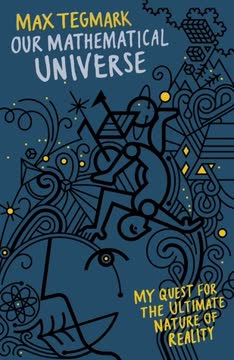
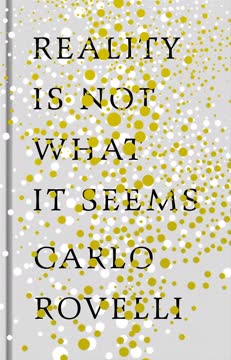

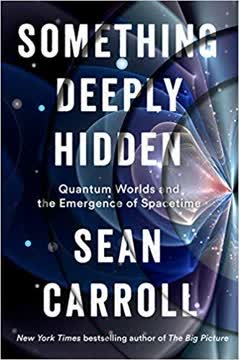
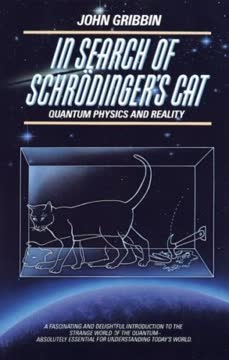

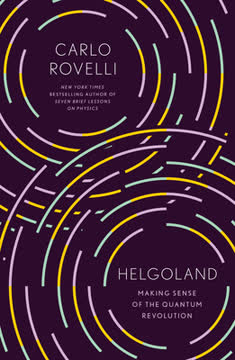
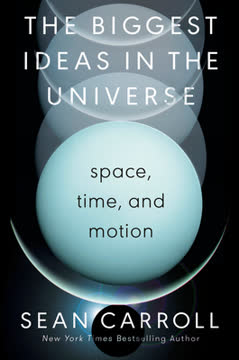
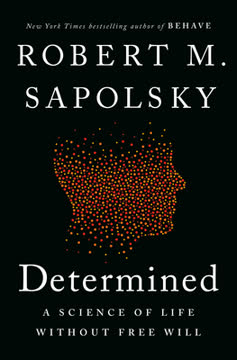
Download PDF
Download EPUB
.epub digital book format is ideal for reading ebooks on phones, tablets, and e-readers.




